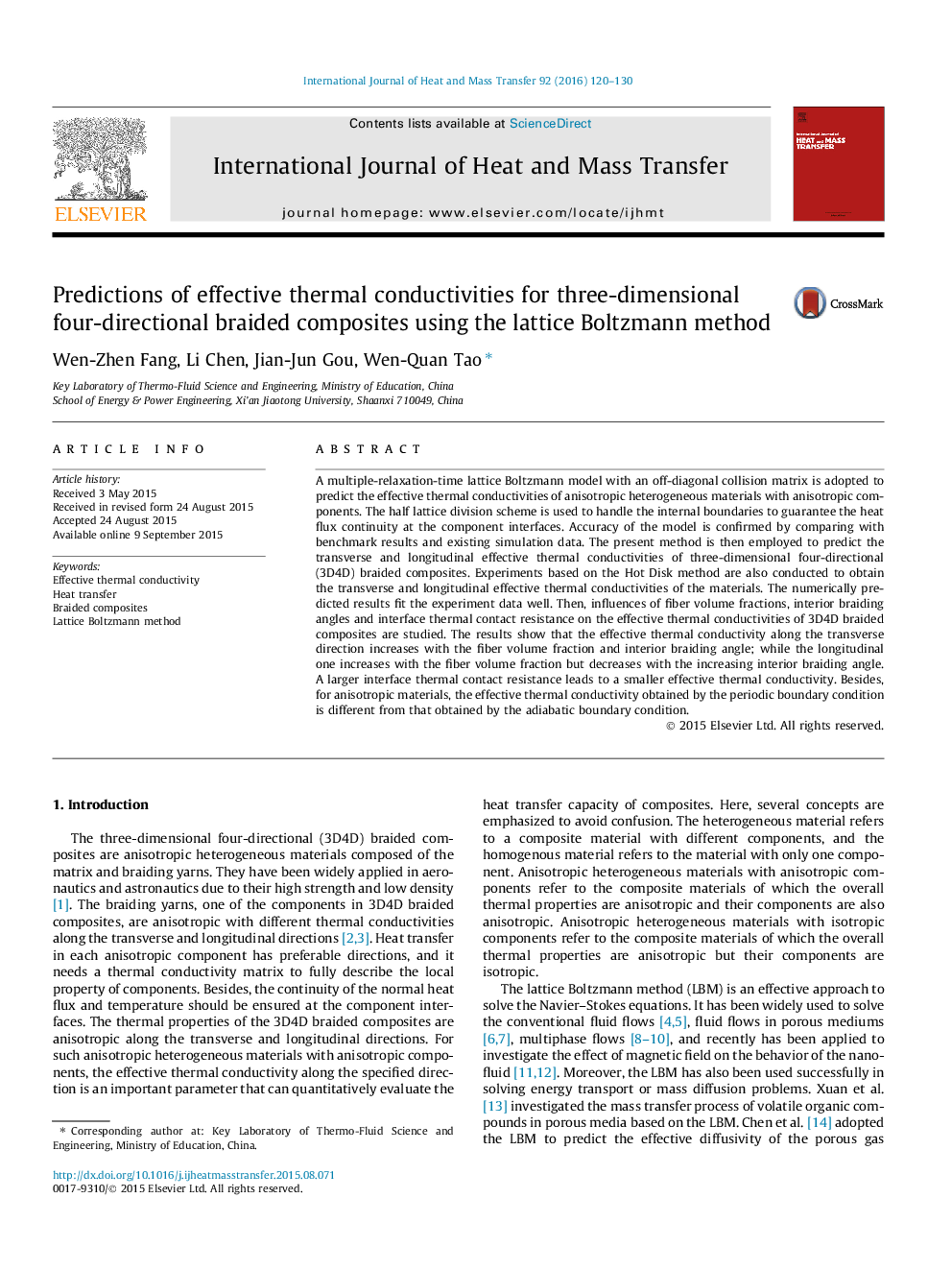| کد مقاله | کد نشریه | سال انتشار | مقاله انگلیسی | نسخه تمام متن |
|---|---|---|---|---|
| 656523 | 1458050 | 2016 | 11 صفحه PDF | دانلود رایگان |
• A MRT LBM combined with the ‘half lattice division scheme’ treatment for internal boundaries was adopted for heterogeneous materials with anisotropic components.
• The prediction of the effective thermal conductivity for the 3D4D braided composites using the LBM is the first try.
• For the anisotropic materials, the numerical results obtained by the periodic boundary condition are different from the adiabatic one.
• Hot Disk method is adopted to measure the effective thermal conductivity of the 3D4D braided composite materials.
A multiple-relaxation-time lattice Boltzmann model with an off-diagonal collision matrix is adopted to predict the effective thermal conductivities of anisotropic heterogeneous materials with anisotropic components. The half lattice division scheme is used to handle the internal boundaries to guarantee the heat flux continuity at the component interfaces. Accuracy of the model is confirmed by comparing with benchmark results and existing simulation data. The present method is then employed to predict the transverse and longitudinal effective thermal conductivities of three-dimensional four-directional (3D4D) braided composites. Experiments based on the Hot Disk method are also conducted to obtain the transverse and longitudinal effective thermal conductivities of the materials. The numerically predicted results fit the experiment data well. Then, influences of fiber volume fractions, interior braiding angles and interface thermal contact resistance on the effective thermal conductivities of 3D4D braided composites are studied. The results show that the effective thermal conductivity along the transverse direction increases with the fiber volume fraction and interior braiding angle; while the longitudinal one increases with the fiber volume fraction but decreases with the increasing interior braiding angle. A larger interface thermal contact resistance leads to a smaller effective thermal conductivity. Besides, for anisotropic materials, the effective thermal conductivity obtained by the periodic boundary condition is different from that obtained by the adiabatic boundary condition.
Journal: International Journal of Heat and Mass Transfer - Volume 92, January 2016, Pages 120–130
